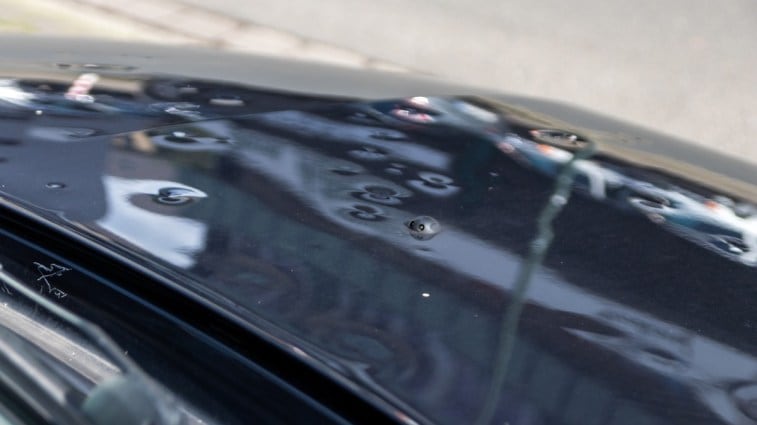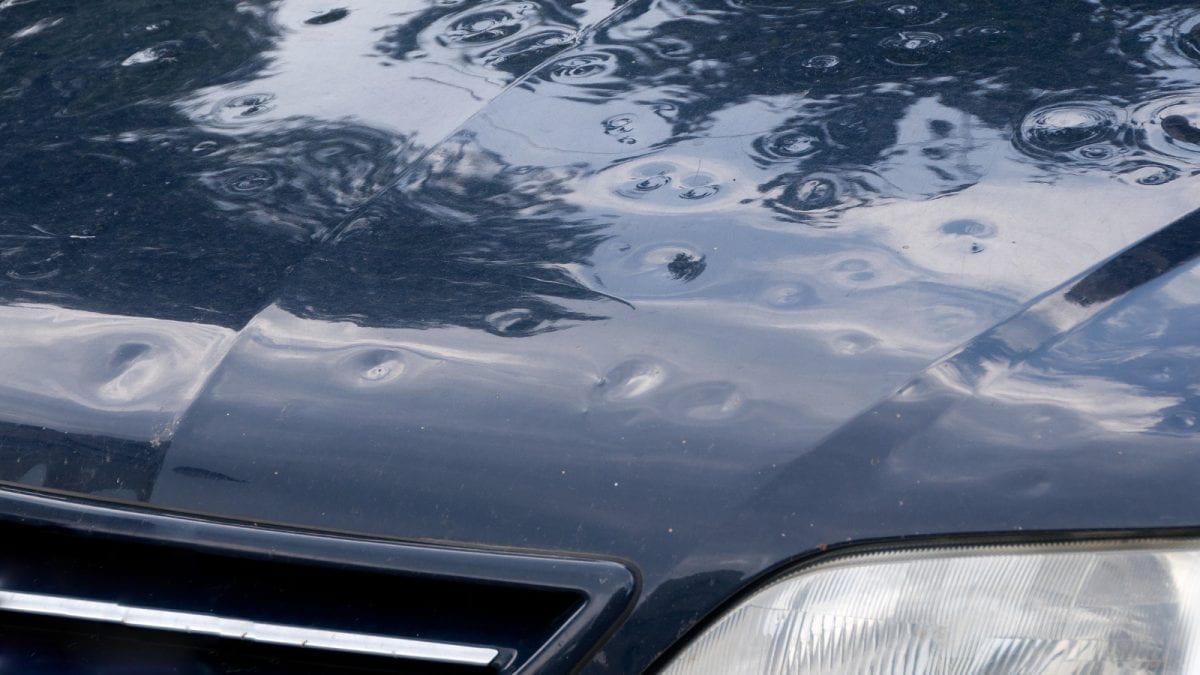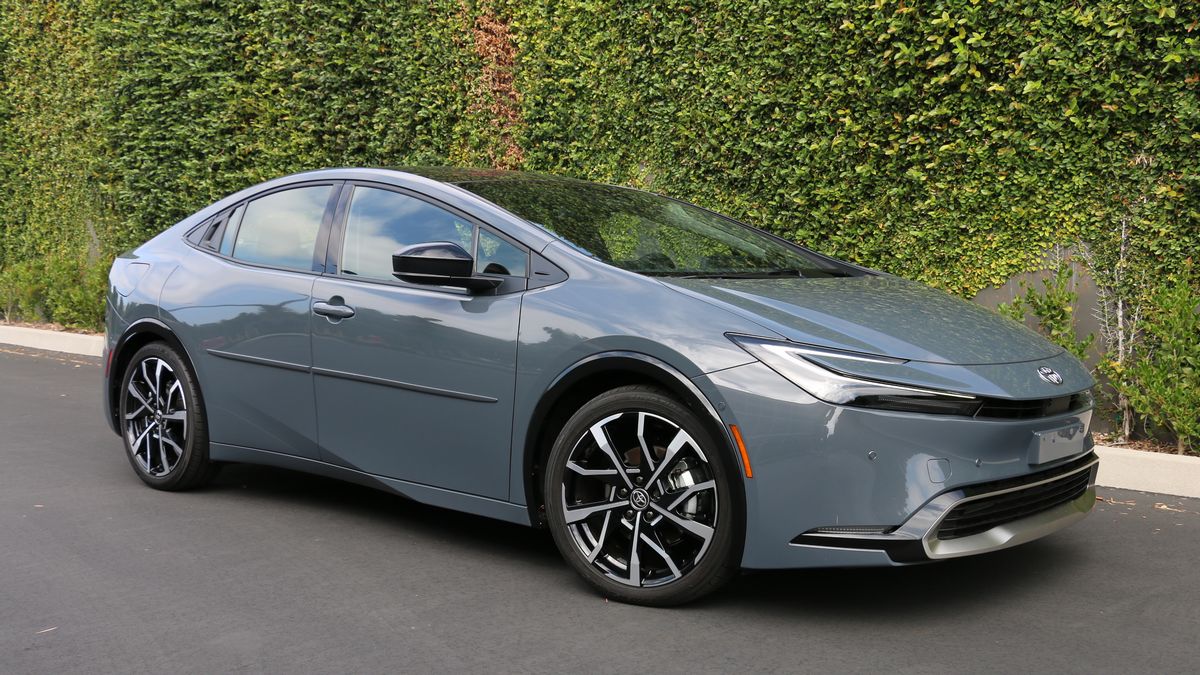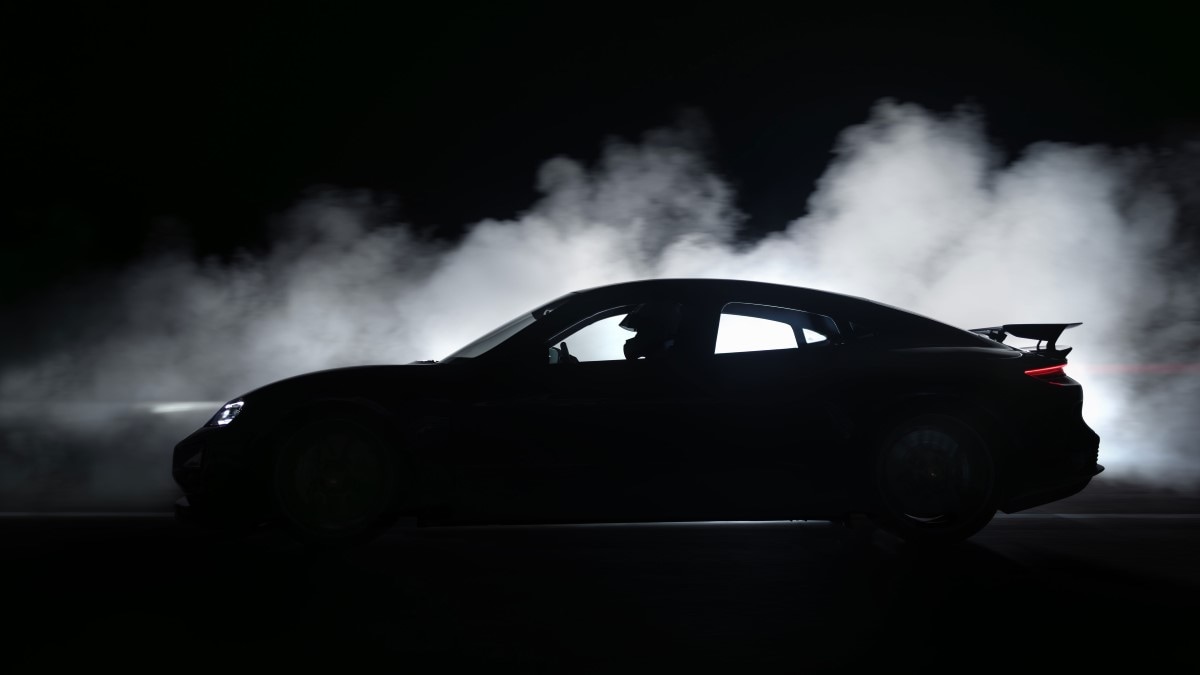Car Hail Damage Quick Facts
- Small hailstones can fall at 25 mph and cause dents on a car’s roof and hood.
- Park inside a garage or another covered location to avoid hail damage, or limit exposure and direct impact using moving blankets.
- If your insurance policy covers hail damage, compare the repair cost to your deductible before filing a claim.
Destructive hailstorms cause billions of dollars in damage annually to property — including automobiles. But you can help protect your ride from dents caused by falling hail, which can lead to hefty vehicle repair bills or car insurance headaches.
Continue reading to learn more about car hail damage. We’ll also give tips on how to prevent hail damage to your car and what steps to take if your vehicle sustains such damage.
What Is Hail Damage on a Car?
Many factors affect the size and speed of falling hail, but one thing is certain: Any hail has the potential to damage your car.
Researchers at the National Severe Storms Laboratory (part of the National Oceanic & Atmospheric Administration) estimate that small hailstones — less than 1-inch diameter — can reach the ground at speeds between 9 and 25 mph. Larger hailstones might reach 25-40 mph, and the largest hailstones — more than 2-inch diameter — from the strongest storms can reach speeds of up to 72 mph.
Almost anything traveling at those speeds can cause a ding on your car. Depending on the size of the hailstone, its speed, and the angle of impact, hail can put dents in your car’s metal panels, chip the paint, and break windows.
What Does Hail Damage Look Like on a Car?

Hail’s size is one factor in the severity of damage it causes. In general, larger hailstones cause more damage. However, even smaller pieces of hail can make small dents in a car’s roof.
Damage will be random:
- One hailstone might put a visible dent on the hood while dozens of other pieces from the same storm bounce off the surface without leaving a mark.
- Another storm might drop hail that causes larger dents over a car’s exterior and crack, shatter, or even puncture the windshield.
Can I Prevent Hail Damage to My Car?
There’s only one way to keep your car safe from hail: Avoid exposure to the ice balls thrown from severe thunderstorms. However, not every driver parks their vehicle inside a garage or under a covered carport. Plus, hail-producing storms aren’t always predictable. They may arrive with little warning while you drive on the road, causing significant damage within minutes.
So, what can you do to help protect your new car and minimize dents and dings caused by hail? Here are some ideas to consider when hailstorms are threatening. Above all, remember that your personal safety during inclement weather is most important.
- Locate covered parking. Parking inside your garage at home is ideal, but hail can fall during your commute or while you’re running errands. When a hailstorm hits, seek overhead protection at a gas station, parking deck, or under a bridge. Alternatively, when precipitation is falling at an angle, parking close to a building opposite the hail may provide some shelter. Another option is to position the vehicle underneath a tree, which will slow the velocity of the ice and potentially reduce damage.
- Use moving blankets. While the technique isn’t foolproof, draping moving blankets or a comforter over the car roof, windshield, and hood can soften the pummeling of hailstones. You can also use the vehicle’s floor mats to deflect the hail. Even collapsed corrugated cardboard boxes may give minimal relief by preventing direct impact on the car’s surface.
- Get a portable storm protector. Car owners in hail-prone locations might decide to buy an inflatable car cover, a hail blanket, or a mobile car tent. Keeping a portable system for hail protection stored in your trunk can be a good investment, even if your residence offers covered parking.
What Size Hail Will Damage a Car?
There isn’t a rulebook that sets a threshold for hail size and vehicle damage. Too many variables come into play to provide a definitive answer. The falling hail’s velocity and damage potential depend on its size, wind direction, and other environmental factors. Plus, plenty of vehicle characteristics can affect the severity of hail damage.
Driving through a storm with pea-size hailstones could cause minor damage to your car. However, larger hail — quarter-size and greater — usually create dents, dimples, and dings. The vehicle’s forward speed may compound the damage, or the car could endure less damage, depending on its direction relative to the hail.
Is it Worth Fixing Hail Damage on My Car?
In most cases, it’s worth repairing car hail damage. However, some people choose to ignore minor dings. Do fix hail damage if chipped paint is visible because the exposed metal can begin to rust. You should also repair cracked windshields and other hail-damaged glass.
Repairing Types of Hail Damage to Cars
One brief hailstorm can inflict enough damage to total a car, which means the cost to repair the vehicle is more than its market value. However, not all hail damage is severe.
- Cosmetic damage: Small dents to the vehicle exterior without chipped paint may be repaired using a technique known as PDR, short for “paintless dent repair.” Some car owners attempt to repair minor hail damage themselves. Remember that most PDR shops have technicians with skills, training, experience, and access to the specialty tools and equipment (such as pneumatic suction) needed to complete a quality job.
- Cosmetic damage with chipped paint: Dents that have chipped or marred the vehicle’s finish require more work. Technicians pound out dents and then fill in spots, sand, prime, and repaint. The amount of time and labor needed for multiple dents from hail is significant. It’s often less expensive to replace the entire body panel.
- Major damage: More extensive hail damage and deeper dents become costly. Heavy damage can bend car body panels, making doors, hoods, or trunk lids difficult to close. Large hail may break windshields. Repair bills can quickly run into thousands of dollars.
How To Fix Car Hail Damage
You might be able to fix minor hail damage like dings and small dents using suction from a special tool. It’s worth repeating that while you can buy the tool to use at home, you can also cause additional costly problems by damaging the paint when popping out the dent. Consider using professionals to fix hail damage before you mess up the car’s finish.
RELATED: Is Rodent Damage Covered by Insurance?
Does Car Insurance Cover Hail Damage?
Check your insurance policy to the sure it covers damage from hail — especially if you live in Nebraska, Colorado, or Wyoming, the states that usually have the most hailstorms. Ask your agent what type of insurance covers hail damage. Typically, if you carry comprehensive coverage, your auto insurance company will pay for your vehicle’s hail damage. A standard liability policy will not cover damage from storms.
Should I Claim Hail Damage Insurance On My Car?
Compare the cost of repairing your car’s hail damage to your policy’s deductible. Fixing a few minor dings out-of-pocket might cost less than a $1,000 deductible.
If you decide to make a claim, contact your insurance company promptly because damaging hailstorms usually affect many people. You’ll want to quickly get into line for insurance claims adjusters and auto repair shops.





